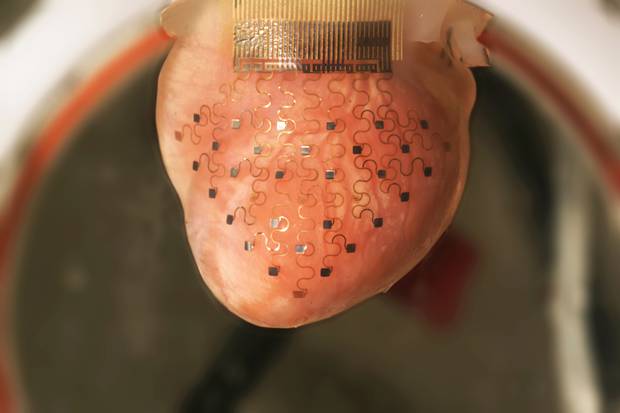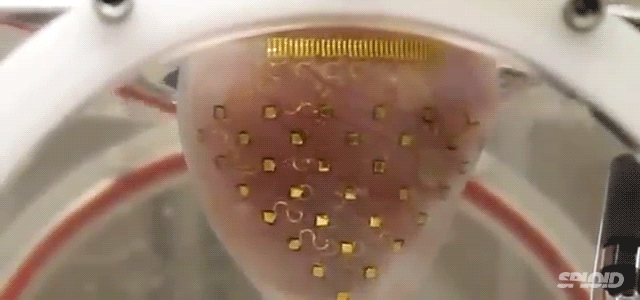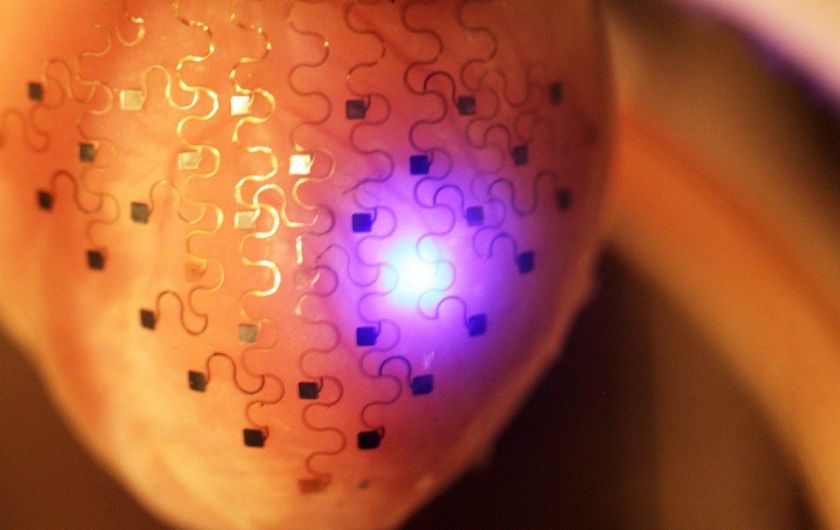This Revolutionary New Innovation Could Help Keep Your Heart Beating Forever
Scientists have created a revolutionary new electronic membrane that could replace pacemakers, fitting over a heart to keep it beating regularly over an indefinite period of time.
Scientists have discovered a 3D-printed, “electronic glove” that could fit on a heart and keep it beating regularly over an indefinite period of time
Scientists at University of Illinois at Urbana-Champaign and Washington University in St. Louis have created a thin, electronic membrane than can keep the heart beating inside at a perfect rate.
This photo shows the new cardiac device ― a thin, elastic membrane ― fitted over a rabbit's heart.
Image via cloudfront.netThis "spider-web-like network of sensors and electrodes" is stretchable and lined with circuits to sense and interact with the heart, unlike the pacemakers and implantable defibrillators currently available.
policymic.comThe research group has already experimented successfully with a rabbit heart by scanning it while it was alive, printing a precise 3D model and creating the membrane to fit it
Once the heart was removed from the rabbit, it was placed inside the membrane in a "nutrient and oxygen-rich solution," and has been beating since then:
The use of high-resolution imaging technology means that unlike current pacemaker and implantable defibrillator technology, the thin, elastic membrane will be custom-made to fit “snugly” over the real heart
"When it senses such a catastrophic event as a heart attack or arrhythmia, it can also apply a high definition therapy,” said biomedical engineer Igor Efimov of Washington University, who helped design and test the device.
“It can apply stimuli, electrical stimuli, from different locations on the device in an optimal fashion to stop this arrhythmia and prevent sudden cardiac death,” Efimov said.



